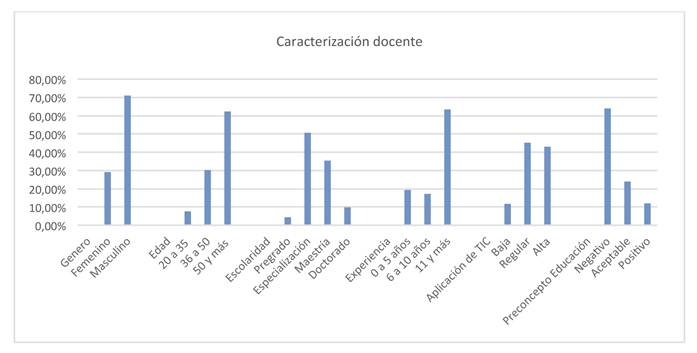
doi.org/10.15198/seeci.2017.42.85-118
RESEARCH
RECONCEPTUALIZATION OF EDUCATION IN THE DIGITAL ERA: EDUCOMMUNICATION, LEARNING NETWORKS AND BRAIN: KEY FACTORS IN THE CURRENT SCENARIOS OF CONSTRUCTION OF KNOWLEDGE
RECONCEPTUALIZACION DE LA EDUCACION EN LA ERA DIGITAL: EDUCOMINICACION, REDES DE APRENDIZAJE Y CEREBRO. FACTORES CLAVES EN LOS ACTUALES ESCENARIOS DE CONSTRUCCION DE CONOCIMIENTO
RECONCEITUAÇÃO DA EDUCAÇÃO NA ERA DIGITAL: EDUCOMUNICAÇÃO, REDES DE APRENDIZAGEM E CÉREBROS. FATORES CHAVES NOS ATUAIS CENÁRIOS DA CONSTRUÇÃO DO CONHECIMENTO
Yeldy Milena Rodríguez García1
1School of Public Administration ESAP. Colombia yeldrodr@esap.edu.co
1Yeldy Milena Rodríguez García: Coordinator of the Education and Digital Environments team of the Academic Branch of the School of Public Administration ESAP. Teacher and researcher in cognitive neuroscience and knowledge construction in digital environments.
yeldrodr@esap.edu.co
ABSTRACT
The concept of education requires a re-conceptualization by teachers and students of the challenges of the digital revolution in communicative terms, which have a direct impact on educational processes. A greater degree of agreement between conceptualization and current educational reality reduces the chances of frustration, decrease in motivation and thus learning and not meeting the expectations of teachers and students. The article presents partial investigative results of the doctoral thesis denominated: “Reconceptualization of education in the digital era. Educommunication, learning networks and brain: a view from cognitive neuroscience to the processes of knowledge construction in digital environments” carried out in the Colombian university educational context from 2012 to 2016. The theoretical foundation of this piece of research is the educommunicative philosophy and practice and the connectivist approach. This paper aimed to analyze the concepts of digital education, educommunicative practices, learning networks and cognitive profiles in a sample of 3,643 students and 300 teachers of different programs at undergraduate level, both groups being neophytes in virtual education and evidence if there was some relation to the processes of knowledge construction. The results suggest that preconceptions about the digital educational practices of teachers and students significantly influence the processes of learning, communication, behaviors and coexistence in these environments, but also the quantitative and qualitative evidence support that these preconceptions can change in a positive sense, when experimenting with pedagogical didactics according to age, cognitive style and with an educommunicative and relational approach. In the conclusions, the aspects to be improved and the futurology are presented.
KEY WORDS: Concept of education, brain, educommunication, digital age, learning networks, knowledge construction, reconceptualization of education
RESUMEN
El concepto de educación requiere una reconceptualización, por parte de docentes y estudiantes, de cara a los desafíos de la revolución digital en términos comunicativos, que impactan directamente en los procesos educativos. Alta concordancia entre la conceptualización y la realidad educativa actual, reduce las posibilidades de sufrir frustración, disminuir la motivación, por ende el aprendizaje y no cumplir las expectativas.
El artículo presenta resultados parciales de tesis doctoral denominada: “Reconceptualización de la educación en la era digital. Educomunicación, redes de aprendizaje y cerebro: una visión desde la neurociencia cognitiva a los procesos de construcción de conocimiento en entornos digitales” realizada en el contexto universitario colombiano (años 2012 a 2016). El fundamento teórico es la filosofía y la práctica educomunicativa y el enfoque Conectivista. El objeto principal fue analizar los conceptos de educación digital, las practicas educomunicativas, de redes de aprendizaje y perfiles cognitivos de muestra de 3643 estudiantes y 300 docentes de diferentes programas a nivel de pregrado, ambos neófitos en educación virtual y evidenciar si existía alguna relación con los procesos de construcción de conocimiento.
Los resultados sugieren, que los preconceptos sobre las prácticas educativas digitales de docentes y estudiantes, influyen de forma significativa en los procesos de aprendizaje, comunicación, conductas y convivencia en estos entornos, pero también las evidencias cuantitativas y cualitativas soportan que estos preconceptos cambian en sentido positivo, cuando se experimentan didácticas acordes a la edad, al estilo cognitivo y con un enfoque educomunicativo y relacional. Las conclusiones presentan aspectos por mejorar y prospectiva.
PALABRAS CLAVE: concepto educación, cerebro, educomunicación, era digital, redes de aprendizaje, construcción de conocimiento, reconceptualización de la educación
RESUMO
O conceito da educação requer uma reconceituação, por parte dos docentes e estudantes, diante dos desafios da revolução digital em termos comunicativos, que impactam diretamente nos processos educativos. Alta concordância entre conceituação e a realidade educativa atual, reduz as possibilidades de sofrer frustrações, diminuir a motivação, não cumprir as expectativas e, portanto melhorar a aprendizagem.
O artigo apresenta resultados parciais de teses doutorais denominada: “Reconceituação da educação na era digital. Educomunicação, redes de aprendizagem e cérebro: uma visão desde o ponto de vista da neurociência cognitiva aos processos de construção do conhecimento em entorno digitais” realizada num contexto universitário colombiano (2012 a 2016). O fundamento teórico é a filosofia, a prática educomunicativa e o enfoque Conectivista. O objetivo principal foi analisar os conceitos da educação digital, as práticas educomunicativas, de redes de aprendizagem e os perfis cognitivos de amostras de 3.643 estudantes e 300 docentes de diferentes programas ambos neófitos em educação virtual e evidenciar se existia alguma relação com os processos de construção do conhecimento.
Os resultados sugerem, que os preconceitos sobre as práticas educativas digitais de docentes e estudantes, influem de forma significativa nos processos de aprendizagem, comunicação, condutas e convivência nesses entorno, mas também as evidencias quantitativas e qualitativas mantém que estes preconceitos mudam no sentido positivo, quando experimentam didáticas de acordo com a idade , o estilo cognitivo e com um enfoque educomunicativo e relacional. As conclusões apresentam aspectos para melhorar e prospectiva.
PALAVRAS CHAVE: Conceito educação, Cérebro, Educomunicação, Era digital, Redes de aprendizagem, Construção do Conhecimento, Reconceituação da Educação.
1. INTRODUCTION
The formation of concepts is an essential component that enables or delays learning, creative and knowledge-development processes; this process is always due to previous learning of each individual, which enhances or limits him, and which are constantly rebuilt based on the interaction of internal and external factors; therefore, knowledge is not one, it is as many as there are individual mental reconstructions. The dynamics of the processes of knowledge construction does not anchor to the formality of educational scenarios and are due to the brain property called “cerebral plasticity” that allows us to adapt to changing environmental conditions, younger brains adapt at a faster rate than adult brains. (Diego Redolar Ripoll, 2014).
The digital age progressively demands to be permeable to educational practices that involve the formation of networks of learning, of collaboration and significant communities of practice, these mediations cause behavioral and cognitive brain changes that strengthen the construction of knowledge needed in the digital age, such as: learning to know, feeling, doing, living and being (López, A 2009). In such a way that the experience can modify preconceptions and enable the mental opening to the dynamics proper to the network society.
In view of the changes and challenges that the communicative environment offers us, facilitated by relational technologies, this study aims to research the starting point or preconception of students and teachers about virtual education, and their impact on the processes of knowledge construction, as well as to determine the adaptability of the studied groups to deconstruct and construct new concepts about the digital environments from the experience, that allow behaviors, social skills, intellectual and psychomotor skills that facilitate team work, as well as the integration of knowledge.
It is undeniable that human culture changed and will continue to change and the brain also continued to evolve; issues of attention and perception, bias of functions, building identity, communicating is different. Networking technology allows us to modify our processing and attention capacity, the use and management of information, the way we conceptualize networks, the network brain is more active, connected, motivated, it can work in a fragmented way, reacts faster. If teachers do not pay any attention to so many challenges, we will not enable meaningful and relevant education. Concomitant with the above, today researchers such as Carmen Marta Lazo and José Antonio Gabelas Barroso from the University of Zaragoza propose the development of life skills, social, emotional communicative and cognitive skills, as well as the development of technological, cooperative, interactive skills as well as skills related to identity, citizen engagement and reuse or remixing of available information. The authors propose an educational system that takes into account the brain and that integrates the media competences passing from the instrumental and cognitive dimension to the attitudinal and axiological dimension for a more humanized culture. (Carmen Marta Lazo and José Antonio Gabelas Barroso, 2016).
The reconceptualization of education must also occur given the occurrence of network phenomena such as: collaborative work that also offers the possibility of co-creating, a term that is discussed in the so-called techno-social communities, as mentioned by Lucia Camarero, UNED researcher: “Humans have always formed social networks. These are the ones that have helped us evolve as a society and those that have led to the creation and development of communities”. L Camarero-Cano (2015), concepts about community formation and socialization as a natural and necessary act for the brain, it must be taken into account in the new educational concepts, it has been demonstrated that the network social processes increase the production of dopamine a neurotransmitter that occurs in states of pleasure and opens the cognitive channels, this also explains the addictions to technology and emotional dependence on social networks, aspects that were not contemplated in the classical educational concepts (Camarero, L. 2015).
The context: Colombia is the fourth country in South America as regards territorial extension, with 47 million inhabitants (the third population in Latin America), it is one of the most diverse countries concerning its population and its natural resources and one of the most multicultural, in regions and ethnic groups of the world. At this latitude, meaningful education is the main means to overcome social and economic marginalization, to escape from underdevelopment and to enable social participation. Despite the advances in availability, accessibility and adaptability in educational terms, Colombia is passing through a moment of transition and articulation towards the global development goals in the digital age, which requires us to rethink our educational, communicative practices, cognitive aspects and learning dynamic proper to our idiosyncrasy and cultural, moral and legal codes; which poses a challenge and an opportunity to educational institutions, in response to the needs of students, teachers and the society where they develop.
Why the need of teachers to reconceptualize education, in the digital age? Currently, the National System of Higher Education Institutions (SNIES) reports that there are 69 masters of Education in Colombia, 60 are offered in a face-to-face modality (3 out of which are high-quality) and 6 are offered in a virtual mode and 3 in a distance mode. SNIES also reports that in Colombia there are 7 doctoral programs in education, all offered in a face-to-face modality, only 1 out of them is recognized as being of high quality (taught by the University of Antioquia). The above figures give us an indication of the predominant modality in which teachers are educated, that is face-to-face, and of the existence of a significant number of master’s degree programs in education without high quality accreditation and only a high quality accredited doctoral program. (National Information System of Higher Education, SNIES, 2016).
The previous evidence shows that teachers in Colombia are mostly trained in face-to-face programs, so their digital skills and their consequent use of media and mediations consistent with the digital culture is limited. It can also be analyzed that there is an interest by Universities to offer masters programs for teachers but that only 4% of the programs that are offered are of high quality; subsequently, the little existence of doctorates in education and only one of high quality shows large gaps in research in educational phenomena. What results in an educational system for teachers, anchored in time that is not articulated to the current social needs and leaves the use of media and mediation for education in the digital age much at the discretion of the teacher.
Despite the efforts of the Ministry of National Education (MEN) and the Ministry of Information and Communication Technologies (MIN ICT) in the generation of policies to strengthen education and growth in access to technology and connectivity. (Ministry of Information and Communication Technologies, 2016, Ministry of National Education of Colombia 2010 and 2014), the progress in education for teachers has been slow and there are large gaps in training to practice teaching in the current global context, gaps in terms of research, training in digital skills, recognition of the profession and remuneration for teachers; this lack of articulation between policies and academic practices to train teachers results in the fact that the major problem in terms of education, which is related to poor results in international and national tests and in general development, does not lie in technology, or in access to it, but in the weakness of the educational system that trains teachers for the global information age, in terms of information management, in processes of critical construction of knowledge, in ethical issues that lead to social phenomena such as corruption, which in turn favors underdevelopment, to continue as a recurring circle.
In the university context, teachers, for the most part, are in agreement with information and communication technologies, but their practices are far from deep understanding of going beyond the tool, about changes in the pedagogical proposals of the digital era, which propose a didactic with open concepts of formation of cognitive networks, through the use of nonconventional means of teaching, seeking to take advantage of creativity. There is then a need for students and teachers to reconceptualize education in the global information age, in which the use and understanding of what technologies enable, such as humanity, clear the path that facilitates the entry into a real network society, an information and possibly knowledge society.
The need to humanize education is a key issue in a country such as Colombia, where the ethical issue of living on values ??has been so neglected that corruption, violence and war are the standard. The Colombian University needs students and teachers to rethink education, in the cultural context that is presented today, and transcend the means to reach mediations where meanings and senses are created and re-created from the interaction of teachers and students with the media and emerging and meaningful contextual networks for true social development.
This work was carried out in the university education context of Manuela Beltrán University (UMB), with a population of students and teachers living in different regions of Colombia and for the first time facing virtual education, in the period of the years 2012 through 2016. UMB is a private university for the middle class, which offers programs in face-to-face (UMB) and virtual (UMB Virtual) modalities, the missionary interest of which is to contribute to the educational growth of young people interested in becoming professionals and to decrease the social gap caused by the lack of education. It has a history of more than 40 years and offers more than 30 programs in a virtual mode, at all levels of technical training, technologists, professionals and postgraduates that have an impact throughout the national territory (Universidad Manuela Beltrán. Quienes somos. 2016).
In the studied courses, educommunicative strategies and participation in disruptive networks were applied, regarding what is “classically” done in virtual classes and variables of cognitive profile and motivation are evaluated. The concept of education to participants was evaluated in a mixed way (qualitative and quantitative), before during and after the experiential process.
What is the problem, what prompted this study?: Virtual education environments, such as those offered by UMB, require research related to the concepts that mobilize the educommunicative practices, and networking by students and teachers and their degree of coherence with the construction of knowledge.
Why? Although the policies of Colombian MEN and MINIC ICT are in line with the objectives of sustainable development set by international bodies that project development (United Nations Organization (UNO), United Nations Educational, Scientific and Cultural Organization (UNESCO), Organization of American States (OAS), World Bank (WB), Inter-American Development Bank (IDB), Organization of Ibero-American States (OEI), in what regards education, technology and culture, the actual university educational practices are far from these policies; Evidence of this is the academic results in international and national tests that are not the best; in the Colombian Universities, students and teachers in general have educational expectations anchored in classical educational concepts and transmission models, which does not allow the use of digital media or mediations for educational progress, knowledge and for general development. In addition, we have lived a social system in conflict for more than 50 years, which makes us rethink ourselves as human beings in a holistic way and involve the brain in education, the breakthroughs in neurosciences and psychology, education in life skills in a context to enable social progress.
The above made it possible to show that research at university level is required: What is to students and teachers the concept of education for the digital age, and the degree of coherence in virtual practices in educommunicative aspects, learning networks and neurocognitive processes proper to our idiosyncrasy.
The study starts with the construction of profiles, cognitive styles and preconceptions in the participants, followed by a disruptive educational experience, faced with the educational face-to-face approaches, where dialogic activities predominate, with an educommunicative philosophy, axiological empowerment, formation of collaborative and playing networks. Once the courses finish, the postconcept of participants about virtual education is established. The behavioral evidence that occurs in classrooms is recorded with analysis of texts, interviews, observation and feedback received from participants. The data also allowed us to establish the relationship between the influence of preconception and academic performance, as well as the relationship between motivation and educommunicative learning scenarios.
2. OBJECTIVES
The general objective was to analyze the concepts of education in the digital age, educommunicative practices, learning networks and cognitive profiles of a population of students and teachers being neophytes in virtual education at Manuela Beltran University of Bogotá, Colombia, in the courses called “Brain” and “Diploma in Strengthening ICT-mediated job skills “ respectively and to demonstrate if there is any relationship with the processes of knowledge construction.
The following specific objectives were developed: 1. Establish the preconception students and teachers had about education in the digital era in the analyzed sample. To describe the educommunicative practices in the virtual courses and their relationship with cognitive processes. 3. Identify and describe the academic use of networks and their relationship with collaborative learning. 4. Constitute the cognitive profiles of students and teachers and relate them to the construction of knowledge. 5. Analyze the relationship between educommunication and motivation in digital scenarios. 6. Infer the importance of the preconception of digital education and the processes of knowledge construction.
3. METHODOLOGY
3.1 Study Type
This is a mixed-design (quantitative and qualitative), analytical, cross-sectional (since it examines a series of variables over time) and prospective study (because its beginning is prior to the studied facts and data are collected as they occur and its development has two phases: Phase 1. Intervention to students (year: 2012-2015) and Phase 2. Intervention to teachers (year: 2016).
3.2 Population
An estimate of 20,000 active students and 26,315 graduates from Manuela Beltrán University, according to the institutional publication. (Manuela Beltrán University, 2016).
3.3 Sample
4,000 students (from 18 to 24 years old) in the period from 2012 to 2015. And 300 teachers (adults over 45 years) in the two academic periods of 2016. Residents in several cities throughout the Colombian territory. The students who participated are in a transversal elective called “Brain” and the teachers in a course on “Strengthening in digital competences” both 100% virtual, in a platform that has the Virtual UMB called Virtual Net 2.0. And, as a mandatory condition, they have to be neophytes in virtual education.
3.4 Qualitative analysis
The macro qualitative approach was the “Grounded Theory”, which makes it possible to develop theory based on the collection and systematic analysis of data. It started directly from the data and not from a priori assumptions, or from other research or existing theoretical frameworks. The general method of constant comparative analysis among data and theory emerges (Glaser, Barney G. 1967). Theory was developed during research, through a continuous interpellation between analysis and data collection. (Strauss and Corbin, 1994: 273).
The primary sources used to collect the information are: interviews, surveys, forum analysis, field observation (conduct in course development). Interactive group techniques are also used, such as: collaborative work, discussion forums, live classes, interactive multimedia, social networks, games, and basic programming tools, artificial intelligence. Within the secondary sources: digital newspapers, radio programs, blogs and videos and interaction with web 2.0 tools. It can also combine qualitative and quantitative data when the conditions and intentionality of the work requires it.
3.4 Quantitative analysis
Descriptive and relational statistics were used, measures of central tendency, to present data grouped with means, standard deviations, that are presented in the graphs.
3.4 Analysis by triangulation
When required, data or methods were triangulated, from the different samples (teachers and students) and different techniques (surveys, interviews) establishing categories and indicators for analysis. Triangulation was used to suppress the uncertainty of a single method (Blaikie, 1996)
4. DISCUSSION
4.1 Preliminary characterization of teachers and students
In order to analyze the variables of interest, it was important in the first instance to carry out a characterization of teachers and students (through a survey), which included personal variables, school development or teaching experience, depending on the case; Affinity for communication technologies and preconceptions about academic practices in virtual environments.
Graphs 1 and 2 include these characterizations, as relevant data, the sample belonging to the course of teachers (Graph 1), contains male teachers over 50 in greater proportion, with more than 11 years of teaching experience and with a concept of virtual education (64% reticence). The sample of students (Graph 2) shows that it is composed mainly of women, young people, whose university education is maximum 3 years and with an acceptable preconception of virtual education (68% acceptance).

Graph 1: Teacher characterization, variables: gender, age, schooling, teaching experience, use of ICTs and preconception of virtual education n: 300. Made by the author
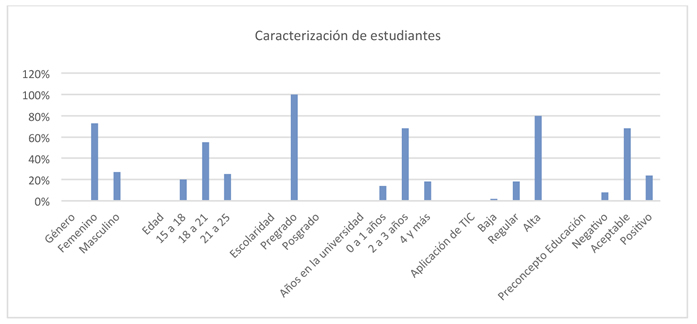
Graph 2: Characterization of students variable: gender, age, schooling, learning experience, use of ICTs and preconception of virtual education (n: 3643). Made by the author
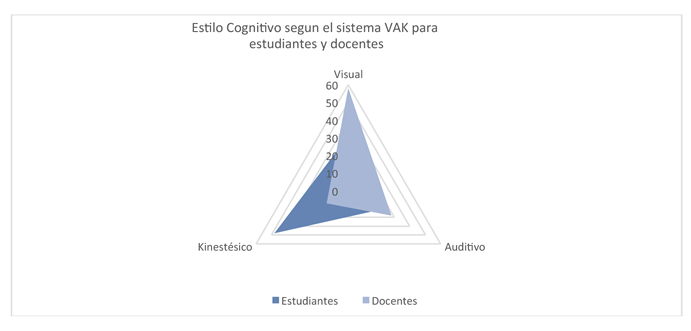
Graph 3: Cognitive style according to model V.A.K, for teachers and students. Made by the author
4.2 Cognitive style of students and teachers
The cognitive styles of the sample of students and teachers were evaluated, based on the model V.A.K. Visual, Auditory and Kinesthetic (Dunn and Dunn, 1978), which shows preference for learning or preferred representation (Visual: prefers the visual channel to represent information and store it more quickly and abstractively; Auditory: uses hearing to memorize and is sequential, and the Kinesthetic: associates information and processes it through sensations or movements).
This starting point was fundamental for the pedagogical planning of the courses, along with the profile that was established, (in Graphs 1 and 2). This way, the pedagogical and didactic design of the respective courses was carried out, to enrich the educational practice. Knowing the cognitive style allowed us to establish the degree of association of them, with respect to the evaluation of learning using descriptive and correlation statistics. In the sample of students, the kinesthetic and visual ones predominated in relation to the sample of teachers, where the auditory visual one predominates.
Considering that the female gender is predominant in the sample of students, it was possible to discuss how to optimize the resources in the microcurriculum, generating multitasking and other attention-focused activities. Since the brains of women can pay attention to several things more efficiently than those of men, Baron-Cohen, S. (2003). And taking into account the characteristics of the teachers, the complexity in playing tasks decreases and the complexity and use of audio, reading and educational videos increases, in both cases under the scheme of critical learning and educational principles.
4.3 Preconception of virtual education of students and teachers
By means of instruments of surveys and interviews, the initial information on the preconception of education in digital environments of students (n: 1,000, participants in the survey and interview, randomly, time window one week) and teachers (n: 100 Participants in the survey and interview, randomly, time window one week) was corroborated. In general, the preconceptions of teachers are not positive in relation to virtual education, they even express fear of losing their job and being “replaced by machines”, they know that it is a reality present in culture but they isolate it from their educational practices in a great proportion; however, some teachers who are about to retire want to learn how to use technology and are generally open to possibilities and with less fear than younger teachers.
Regarding students, their preconception of virtual education in general is positive, being digital natives, they cannot conceive why teachers are so reluctant to use technologies for academic practices. Although they state they know how to use the devices, they are afraid of some situations in the network and prefer to feel overwhelmed with so much information and little training to evaluate it. So, this scenario refers to an asynchrony (between students and teachers) of cognitive profiles, use of technology and deep understanding of what to learn and to teach in the digital age can mean.
The construction of knowledge in our educational institutions continues to be evaluated by the actions of: recognizing, storing, retrieving, understanding, organizing and using information, which are commonly used in academic evaluations, as verbs that evidence student actions and have been described in different taxonomies of verbs for the construction of academic objectives and competences. The change can start from the teaching practices, including for example verbs or actions of the network society in the structures of their curricula and their didactic and making a mental opening to other pedagogical practices that include variables of the digital revolution, macro data, networks and their developments applied in education; These dynamics invite us all to communicate, learn, unlearn and educate in a different way and to understand these processes from our biology to promote the best strategies to educate the brain.
The encounter with these new ubiquitous and network virtual educational paradigms of collective intelligence (Lévy, Pierre, 2004) offers us challenges and opportunities to analyze educational (brain function: cognition) and communicative practices (brain function: language) Possible relationship with the mental processes of information management and knowledge construction, which emerge in the digital academic environment.
4.4 Students’ experience in the elective transversal course of “Brain”
Virtual UMB offers the virtual transversal elective of brain to students of all degree courses and throughout the national territory. This subject is the experiential scenario that will be analyzed in this piece of research, and it was designed from the pedagogical and didactic point of view by the author of this piece of research.
The Brain course is a space of self-knowledge as human beings, of the most enigmatic known organ: the brain; in biological, physical, chemical, psychological and functional, basic aspects, as a center of control and integration; as well as in other more applied aspects such as complex higher functions such as learning and memory, and consciousness, brain mechanisms of behavior, emotion, motivation, dementia, pain, brain functions in communication, language, sexuality and extreme states of brain activity such as epilepsy, psychosis and sleep. It is conceived with an educommunicative philosophy so it makes it possible to interact with games and demos on artificial intelligence, virtual reality and augmented reality that allow people to integrate theoretical knowledge with real applications of their environment.
In the years 2012 through 2015, 3,643 students from all over the national territory had the opportunity to have this educommunicative and network experience. (Graph 4)
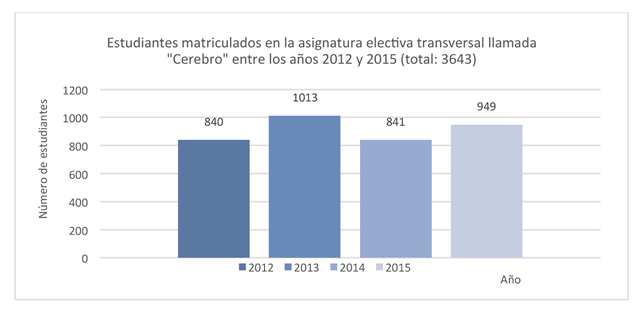
Graph 4: Number of students enrolled in the “brain” subject in the year 2012 through 2015. Made by the author
The brain course has 5 modules that, in their order, address these 5 questions: How did the brain evolve?, How is it organized?, How does it work?, What are the complex brain functions?, Which are the latest breakthroughs in neurosciences, artificial intelligence, virtual reality and augmented reality?
Methodologically, the learning process was mediated online, in the Virtualnet 2.0 platform, which provides an interactive and intuitive experience, in which learning supported by web 2.0, collaborative work, social and leisure networks, educommunication are evidenced. It includes graphic elements, PDF and interactive multimedia for each module, and games, which enhance knowledge. It is important to emphasize that, in each subject of the modules, the student is offered several possibilities for choosing the subtheme that interests him to work with and which has more affinities and is more significant according to his profession and the geographical region where he lives. What results in obtaining average much higher grades than other electives (Graph 5)
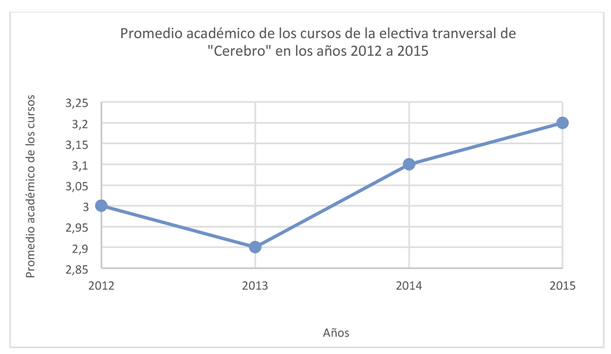
Graph 5: Net academic average in brain courses from 2012 to 2015. Made by the author
The evaluation of learning mediated by educommunicative experiences (Graph 6) shows very positive results with the empowerment of students in radio activities (74%), synchronous meetings (80%), and games (72%). While activities involving the production of videos and web 2.0 interactive material showed average approval, the worst results with the students are in the development of artificial intelligence activities (40%), which involved programming skills.
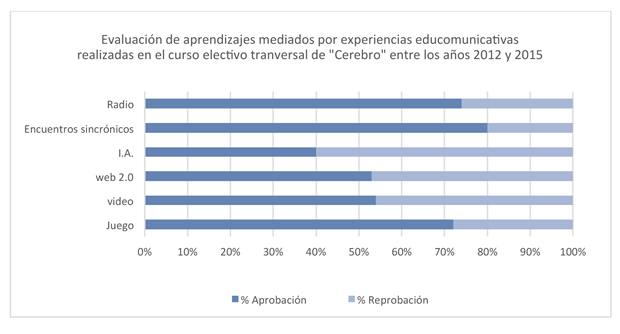
Graph 6: Evaluation of learning mediated by educommunicative experiences carried out in the elective transversal course of “Brain” in the years 2012 through 2015. Made by the author
In assessing whether there were differences in the evaluative weighting of the different educational activities (participation in games, video production, Web 2.0 activities, Artificial Intelligence, synchronous meetings, and participation in radio programs) over time no significant differences were found in the analyzed years. (Graph 7).
One of the objects of the experience offered to the course was to experiment with activities that would center and empower the student of his cognitive and critical process; As proposed by Kaplún in the current pedagogy of communication (Kaplún, M.2010), and according to the challenges of this connected world in the Internet network of networks, the didactic conception of this experience was carried out in the class of brain, which has to do with the own interpretation of the relation between communication and education immersed in this Colombian culture and society. According to Barbas (2012) quoting Kaplun (1998), that to each way of conceiving education and society corresponds a practice of communication and there are educommunicative practices that do not correspond to the real conceptions of education. According to the results reflected in Graphs 6 and 7, they were successful from the point of view of the evaluation of learning. When triangulating the information that was available in the dialogues, forums and emails, receptivity and predisposition to participate was excellent.
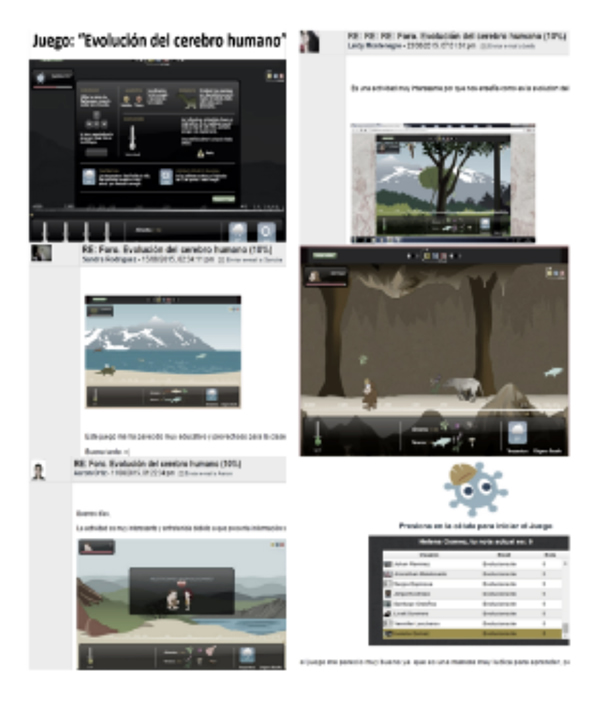
Image 1: Evidence of the brain evolution game, an interactive and self-evaluating OVA. Collection of classroom images
Http://plataforma.umb.edu.co/virtualnet/homec.php
Image 1 shows images of the first interactive activity of the brain course, which corresponded to the interactive and self-qualifying game. In this game, the student started with a cell avatar, which, by overcoming environmental obstacles, predators and answering the questions, was aptly turning into different organisms where it interacted with information and questions of the evolution of the brain of these organisms, until reaching the primates, hominids and homo sapiens; the game ended with the pregnancy of a (human) Homosapienssapiens and explanations about fetal neurodevelopment, a subject that, when offered with this interaction, was understandable and meaningful to the majority of students who belonged to different degree courses and therefore had different interests. The qualitative evaluation was in real time and the student could stop and continue whenever he wanted. Feedback on this activity, as well as participation in the class, increased significantly (Image 5), participation in the discussion forum on the subject was also evident in all the dynamic courses and with a level of depth greater than other activities that do not involve playing.
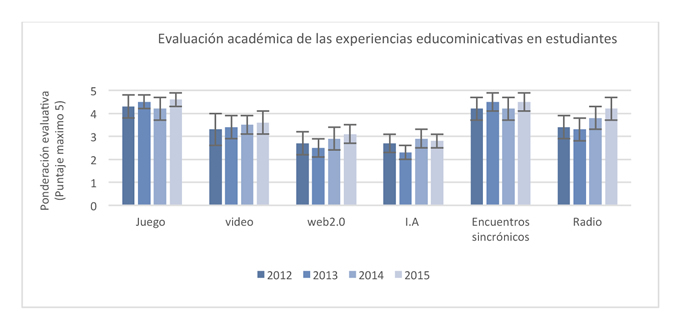
Graph 7: Academic evaluation of educommunicative experiences in students in the years 2012 through 2015. Made by the author
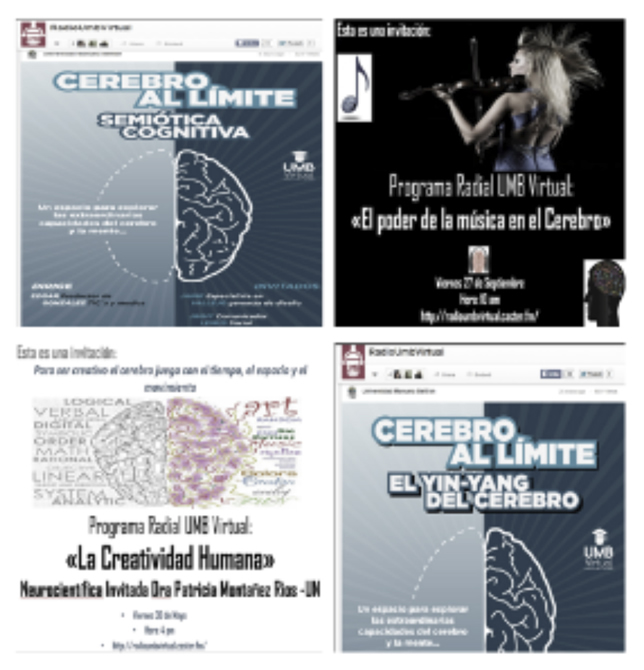
Image 2: Evidence of some radio programs offered as an academic strategy to generate debates in the forums with possibility of live participation. Collection of images of the classroom Http://plataforma.umb.edu.co/virtualnet/homec.php
Another type of educommunicative interaction was radio programs made with the participation of students and communication with their peers in real time, by telephone, chat and social networks (an exercise similar to that of Jose Celestin Freinet, but with radio). Image 2 shows some of the radio programs that the students made, they chose the subject through a survey or a dialogue in the course forum. These spaces were called disruptive by the academic community and generated the opening of the UMB Virtual university radio, with the purchase of an own channel, since the first programs were made by the students with free servers of the network. (Image 2, some examples of radio programs broadcast by students and for students) interaction in this scenario shows an excellent assessment of learning that was progressive over time (year 2015: 4.2 overall average of courses in this activity). (Graphs 6 and 7).
Among the educational experiences offered to students, there were also the use of social networks and collaborative work exercises, as shown in Graph 8, learning in social networks Facebook, twitter and collaborative work was assessed, with a tool developed for this purpose in the Virtual Net 2.0 platform, which evidenced the process of working together (through video, which captures all inputs and activity of the participants) and not only the collaborative product.
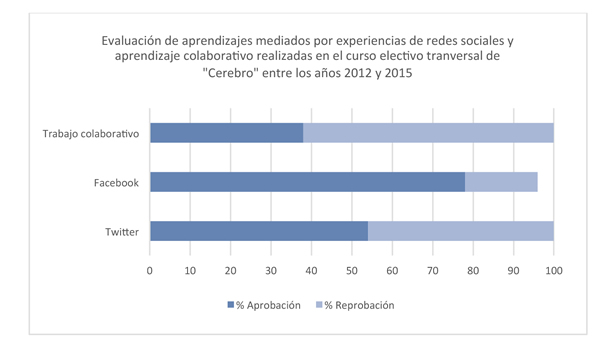
Graph 8: Evaluation of learning mediated by experiences of social networks and collaborative learning carried out in the elective transversal course of “Brain” in the years 2012 through 2015. Made by the author.
The results of the activity in social networks in the analyzed period of 4 years suggest great acceptance of work in the social network Facebook (78%), followed by twitter (54%) and less ability (38%), for the activities of collaborative work. These results may be due to students’ little expertise in this type of collaborative activities, in virtual environments. According to Siemens, people need time to acquire a space of trust. Siemens, G (2010), ie students have not internalized the concept of a collaborative activity in the network and how to manage it.
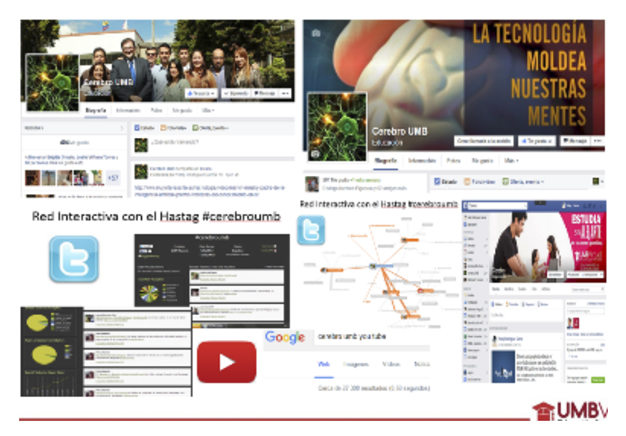
Image 3: Evidence of social networking work Facebook and Twitter; Some analysis by mentionmap) .Compilation of classroom images
Http://plataforma.umb.edu.co/virtualnet/homec.php
Image 3 presents evidence of some interactions of social networks in this mass course, initially the brain page was created in the personal account of the teacher and, when seeing the success and increase of continuance in this course, the university created pages of Facebook for the subjects that wanted to mediate their learning with this social network. This fact went beyond the brain classroom and constituted an education movement with the use of social networks throughout the University, as students began to demand these spaces in other subjects (Image 3).
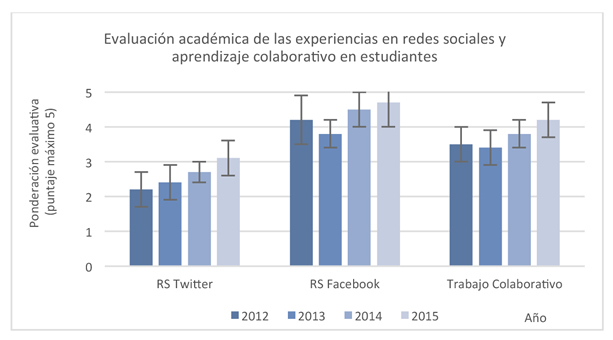
Graph 9: Academic evaluation of experiences in social networks and collaborative learning in students. Made by the author
Regarding the academic evaluation of the experiences in social networks and collaborative learning (Graph 9), an improvement of the performance over time is noticed, this is due to the empowerment that has been given in our country to social networks (Twitter in 2015 : 3.1 / 5 and Facebook in 2015: 4.7 / 5); In terms of collaborative work, there is better performance in learning in the years 2014 (3.8 / 5) and 2015 (4.2 / 5.0).
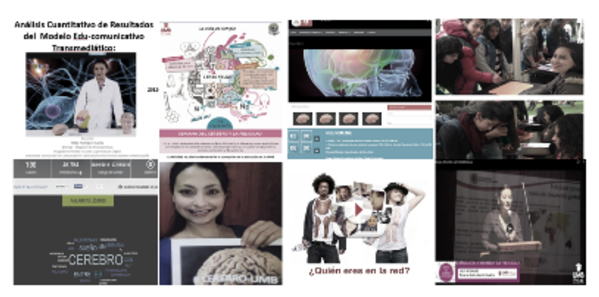
Image 4: Evidence of synchronous face-to-face learning strategies: Brain Week, live classes, dialogues, dialectics in twitter, academic meetings, days of mental challenges. Collection of classroom images Http://plataforma.umb.edu.co/virtualnet/homec.php
The Virtual Net 2.0 platform allowed us to know the reports of activity concerning income and contents visited during the experience of the courses. Great activity was evidenced (Image 5) in terms of the amount of visited contents that accounted for interaction in this course with respect to other courses that have little interaction. There was a change in user behavior in the first weeks of class, with few interactions, but once the self-assessing game that was first activity was taken, the interactive behavior in this course changed and the motivation of participants towards this elective increased. The quantitative results were corroborated with observations, interviews and feedback.
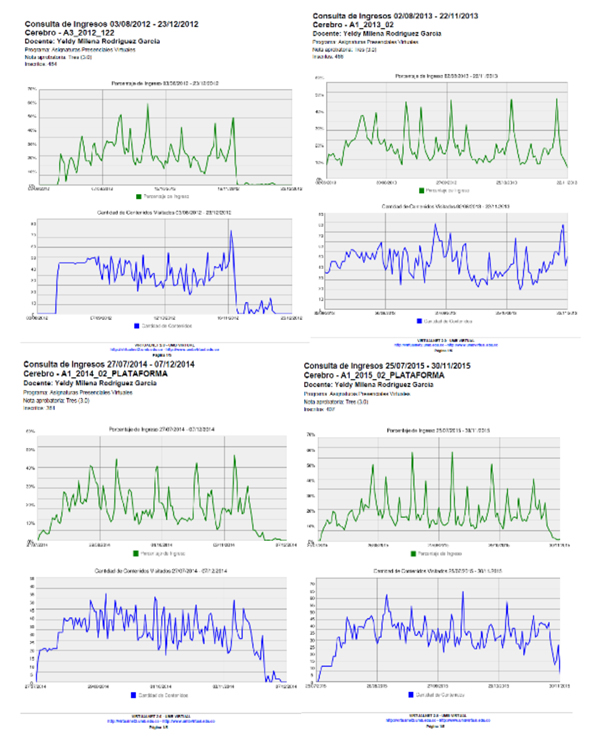
Image 5: Behavior of income and visited contents.
Compilation of classroom images
Http://plataforma.umb.edu.co/virtualnet/homec.php
4.5 Teachers’ experience in the elective course “Diploma in strengthening ICT-mediated job skills”
On the other hand, the experience that was carried out with the teachers was in an elective diploma course to strengthen technology-mediated job skills, 300 teachers located in different regions of the country participated in it. In order to have comparable variables, a micro curriculum was organized with educommunicative activities, social networking and collaborative learning, as well as with the course for students, but offering mediations according to the learning style.
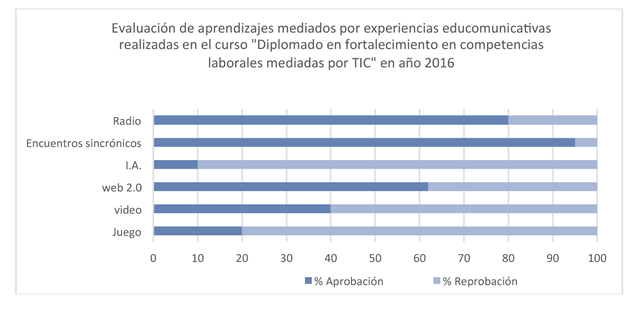
Graph 10: Evaluation of learning mediated by educommunicative experiences carried out in the course “Diploma in strengthening ICT-mediated job skills” offered to teachers in 2016. Made by the author
Graph 10 shows the educommunicative experiences offered to teachers, there is greater receptivity for synchronous meetings (95%), radio programs (80%) and deficiencies in participation in academic games (20%) and videos (40%), and very little progress in programming activities (10%). Comparing with student behavior, these are contrary results, the analyzed sample of teachers prefers to participate in activities close to what they know, ie the model of traditional and face-to-face education, note the high participation in synchronous meetings (95%). As reported by Morin in 2000, report to UNESCO, there is some knowledge necessary for future education, which we teachers are in default to lead, see the low approval rate in activities of games, videos and programming, in which this sample of 300 teachers has the opportunity to strengthen. (Morin, E. 2000).
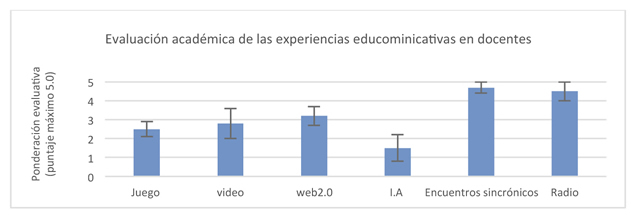
Graph 11: Academic evaluation of educommunicative experiences in teachers. Made by the author
The academic evaluation (Graph 11) confirms the results of the experience and the qualitative evidence.
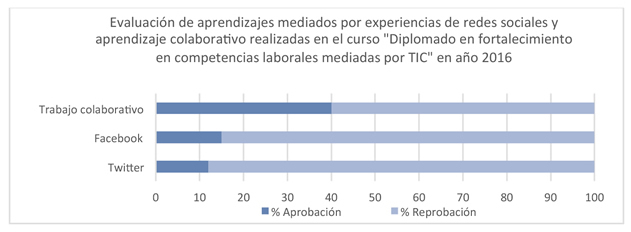
Graph 12: Evaluation of learning mediated by social networking experiences and collaborative learning. Made by the author
The evaluation of learning mediated by social networking experiences and collaborative learning (Graph 12) made to teachers of the course “Diploma in strengthening ICT-mediated job skills” in 2016 for teachers suggest good development in collaborative work activities (40% of teachers passed) unlike what happened with the students, this is a very positive point for teachers and can be easily articulated to their didactics in the future. The analyzed teachers show weaknesses in social networks. (15% in faceboock and 12% in Twitter), but, in the dialogue and the interviews, they report their desire to learn how to manage their classes in networks.
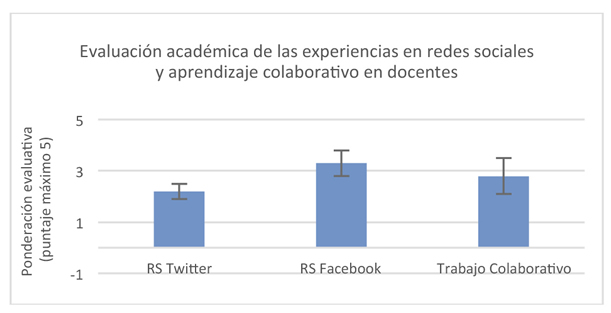
Graph 13: Academic evaluation of experiences in social networks and collaborative learning in teachers. Made by the author
Graph 13 quantitatively corroborates the previous results, on the academic evaluation in these 3 environments.
Already at the beginning of the millennium, Castells, in his book The Information Age, sees this reality with as many qualities as challenges in teacher training (Castells, 2000). This starting point with the vision of Castells can be a pillar to begin to transform the concept of education in digital environments by the teachers. Surely, with this experience, the ICT discourse ceases to be a dead letter and becomes a motivating and challenging axis for the teacher. In view of the distribution of the teachers who took the diploma course, we can make a projection of the state of training and digital skills of teachers at a higher level, since these teachers were distributed at the national level.
In order to monitor the teaching experience in topics such as: advantages, development of skills, that could assess experience, significance, motivation, and in order to assess aspects related to methodology and accessibility, an instrument was made to evaluate the experience of teachers in this diploma course, to which 300 teachers were invited but only 175 answered, since it was not compulsory, some results are presented in Graphs 14 through 16.
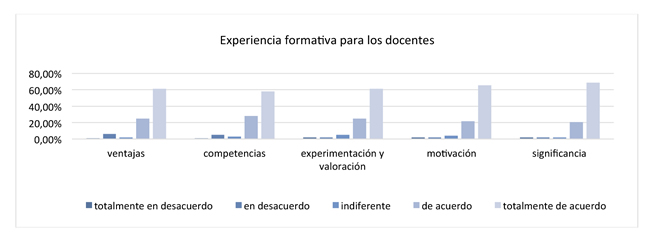
Graph 14: Style, training experience for teachers. Made by the author
When teachers are asked about their training experience (Graph 14) in the virtual diploma course, in the categories advantages for teaching work, development of technological skills, experimentation and assessment of the course, motivation to continue carrying it out, and significance in their personal development, they report to entirely agree with the contribution of the course to these topics.
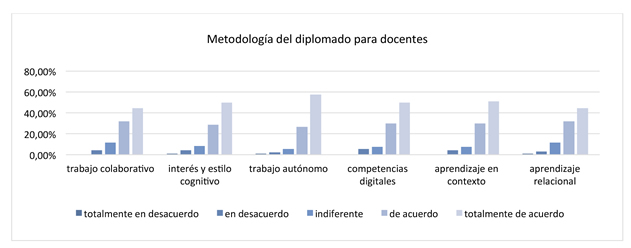
Graph 15: Methodology of the diploma course for teachers. Made by the author
When teachers were asked about the relevance of the methodology, (Graph 15) in the virtual diploma course, in the categories: collaborative work, interest and cognitive style, autonomous work, digital skills, in-context learning and relational learning, they also report they entirely agree with the contribution of the course to these topics, as a trend to “entirely agree” is observed in the columns (Graph 15).
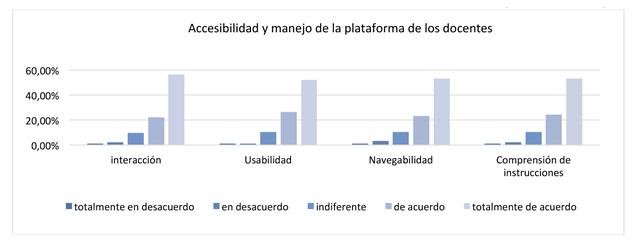
Graph 16: Accessibility and management of the platform of teachers. Made by the author
About accessibility and management of the platform, in categories such as: interaction, usability, navigability and understanding of instructions, the 175 teachers report they entirely agree with the functioning of these items (Graph 16).
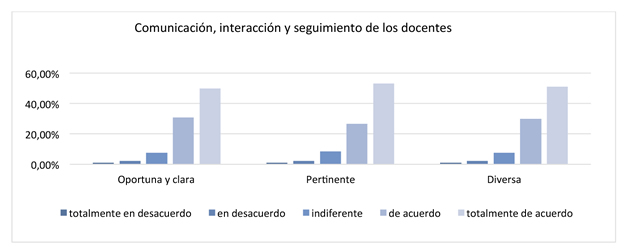
Graph 17: Communication, interaction and follow-up of teachers. Made by the author
When teachers are asked about topics of timely communication, easiness of interaction and accompaniment and follow-up to the process of the diploma course, the respondents say they, in general, agree or entirely agree with the fact that these processes were well developed (Graph 17).
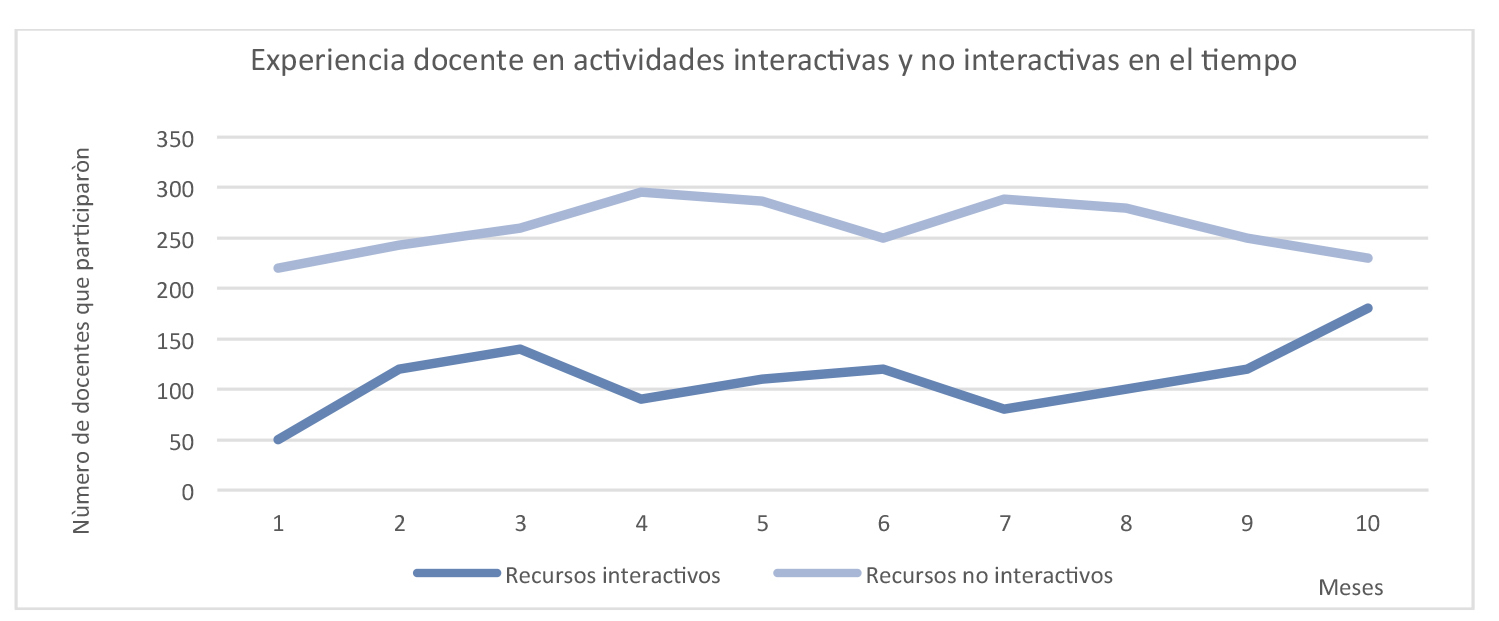
Graph 18: Teaching experience in interactive and non-interactive activities over time. Made by the author
The teaching experience in this diploma course was designed pedagogically according to the cognitive profile, for that reason, it had a high content of infographics and interactive multimedia, which were enriched with audios, videos and readings (According to the results of a VAK profile, of teachers), This required teachers to interact with the material on line. Graph 18 shows the teaching experience in interactive and noninteractive activities over time and, as observed, there is an evolution in the participation and use of these resources over time, in general more teachers participate with noninteractive resources, however, from the 7th month onwards, there is an evident increase that remains positive until the 10th month of the experience, demonstrating that we can transform the teaching practices through their own interaction with these materials, even if it is observed in the graph, the use of non-interactive resources began its decrease in the 7th month. In corroborating with the analysis of interviews, teachers declare they start their activities in the noninteractive environment in which they feel more comfortable, but they report over time to be curious to investigate the unknown aspect of an interactive resource.
At this point, it is important to consider the Vygotskian concepts of comfort zone, near development and panic, in the social processes of learning. This concept is exemplified as the distance between the student’s actual level of development (what he can do alone) and the level of potential development (which he can do with the help of another). These processes of knowledge construction emerge in the interaction with the group, even the increase of participation in interactive resources can also be due to the so-called collective intelligence, in which it is no longer the individual independently who shapes their attitudes, but the group.
These behaviors from the point of view of cognitive neuroscience are to be expected, to remain in the comfort zone, as a defense mechanism, then and thanks to the influence of colleagues of the course they open their activities, ie they enter the near learning zone, as Vygotsky discerned since 1931; it is clear that the comfort zones and near learning zones are very different for students and teachers, and what can be comfort to students is near development or panic to a teacher.
In summary, the cultural changes brought about by the global information era or digital era undoubtedly have an impact on the concept of education according to students and teachers, expectations, hopes and fears generated by education in a networked society empowered by the media, critical and informed (Osuna, 2007). Much of the success or failure in an educational system can be attributed to the previous expectations of students and teachers, to the acceptance of the challenges related to face new situations, to properly manage the information, to learn to work collaboratively and to empower communication to the service of education (Aparici, 2010).
4.6 Post concept of students and teachers
Finally, after the two experiences of teachers and students, we analyzed the evolution of the change of preconceptions after the experience in education in digital environments, Graph 19 includes an analysis in which we triangulated the information (interviews and surveys) of previous concepts, in the experience and at the end of the courses.
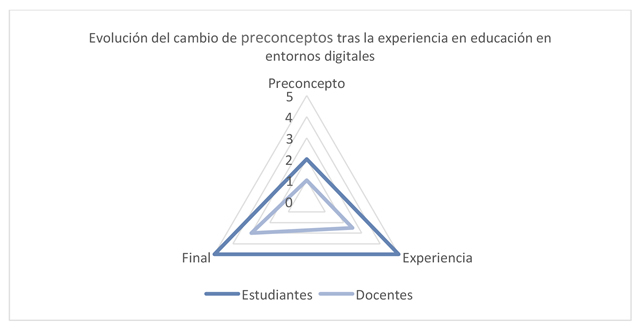
Graph 19: Evolution of the change of preconceptions after the experience in education in digital environments. Made by the author
The concept of students and teachers changed in the process (Graph 19), students, the darker line, began with a scarcely favorable preconception (2), and in the experience and completion of the course there is an increase in the valuation of education in digital environments and it increases to the allowed maximum, which is 5. In the case of the teachers the clearer line, they start with a very scarcely favorable preconception (1) and in the experience it increases to fairly favorable (2) (5) and at the end of the experience it increases (3), acceptance and favorability related to the digital educational scenarios. It can be noticed that the brain of students adapts more quickly (greater cerebral plasticity), regarding the unhurried rate of change of teachers, a barely natural situation, taking into account the initial comparative profile of the teachers who participated.
One of the pillars for the transition to new situations and the formation of new knowledge is language, which. in the case of teachers in this study. poses a problem for access to information and the construction of knowledge. This is related to Chomsky’s speech in 1988, which provides important analyzes of language, new languages and knowledge problems, which emanate in new environments (Chomsky, 1988). The convergence of media and information allows changes in the transmission of information and creation of knowledge, in aspects such as: increased access to information, its processing speed and distribution, it is possible to segment audiences, other language codes emerge to communicate, new ways of knowing and thinking; Given that these transformations are so fast, the epistemological reconceptualization of education should be a priority for teachers. Gutiérrez Martín, A. (2010). Conceptual change is a gradual process, requiring appropriation, experience, repetition, time, only this way can memory be modified in the long term (Kandel, E. 2006). The time required to re-conceptualize from the neurobiological point of view is the same spent in the brain to rebuild neural tissues and networks and build new networks, this biological process involves the division of neurons or the readjustment of existing neurons to meet other functions, as it is biological, it is regulated genetically and environmentally, so that conceptual changes and human behavior are so unique to each other.
On the other hand, the processes of construction of new concepts are influenced by the type of predominant intelligence of the individual, (Gardner, H.1999). The so-called multiple intelligences are valid, although with greater understanding from the neuroscience, in that there are no restrictions for the brain to change or to develop several types of intelligences. In short, the brain is always changing, adapting to the demands of the environment, a variable that influences drastically to activate these processes of change (brain plasticity) is motivation.
The obligatory question before beginning any process of formation (plasticity and cerebral change), would be: What motivates us? and What motivates my students?
4.7 Influence of the preconception of education in digital environments on academic performance
Once the evolution of the concept was evaluated, we studied if there was any influence of the preconception of education on digital environments and academic performance in educational scenarios, social networks and collaborative work in students and teachers. The results are observed in Graph 20.
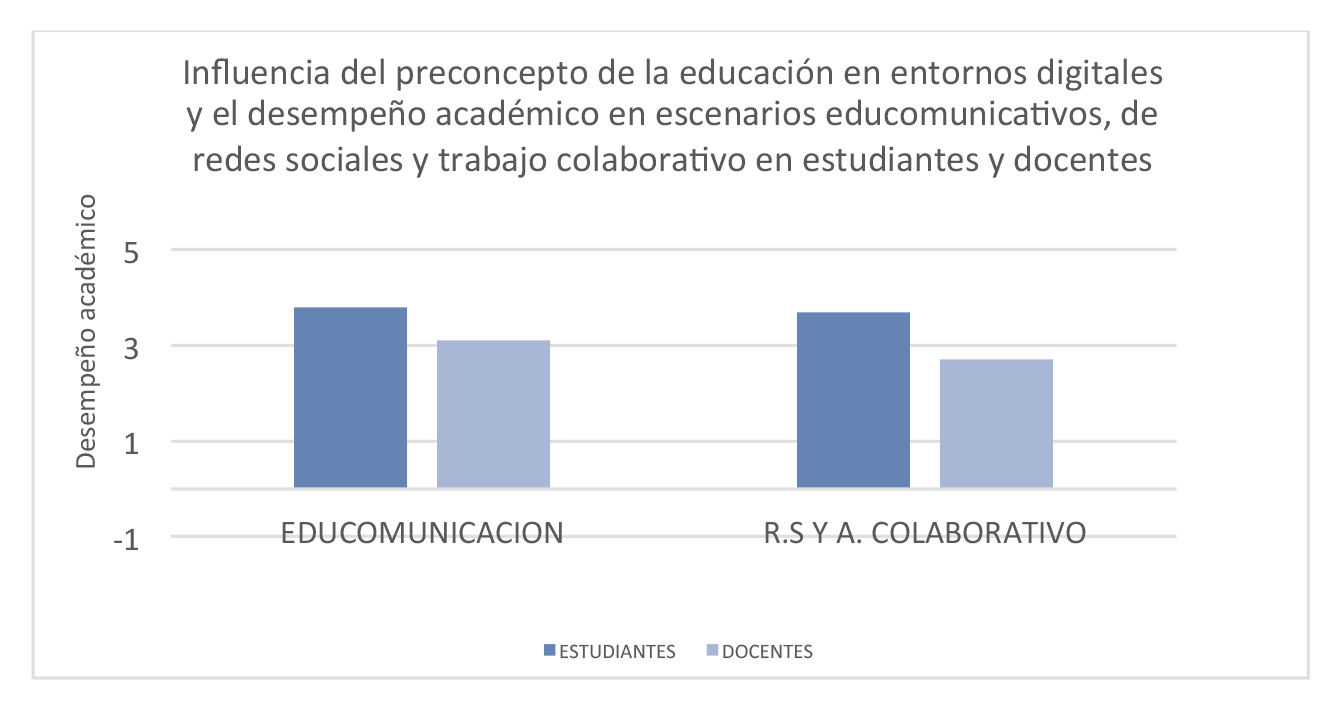
Graph 20: Influence of the preconception of education in digital environments and academic performance in educommunicative scenarios, social networks and collaborative work in students and teachers. Made by the author
As described in Graph 19, teachers’ preconception about education in digital environments was 1 (very scarcely favorable) and that of students 2 (scarcely favorable). In Graph 20, it is evident that: the students who had a better preconception basis had better academic performance in all the activities of the experience in the course, the opposite happened with the teachers.
In conclusion, the basic preconception impacts directly on academic performance and behavior in activities, for example the orientation to achievement or working on intrinsic motivation. Reconceptualization of education in the digital age makes it possible to assess the major challenges universally assumed by universities, which are framed in the accelerated informational development, which has a social, technical and economic impact and has direct repercussions on education in the so-called educational computing, which gives practical meaning to computer media and applies them to the concrete educational context (Castells M. and Himanen P. 2016). Information development was established on a global scale at the beginning of the 21st century (Castells 2000 and 2004, Cohen 2005). The characteristic of informationalism is the use of digital information and information and communication technologies, which increases the dissemination of networked organizations in the areas of social and economic life; and the processing of information and digital communication is enhanced, enabling the growth of the so-called information society. Information technologies allow knowledge and information to be distributed and applied in any context, so productivity growth since the 1990s has been called “the new economy” (Castells 2001), an aspect that must occupy a preponderant place in the universities that agree to focus their efforts to educate young people in the skills that require this society and culture that is permanently transformed.
4.8 Relationship between motivation and educommunicative learning scenarios
Finally, the relationship between motivation (extrinsic and intrinsic) of students and teachers with better performance and educommunicative learning scenarios was established, the results are shown in Figure 21.
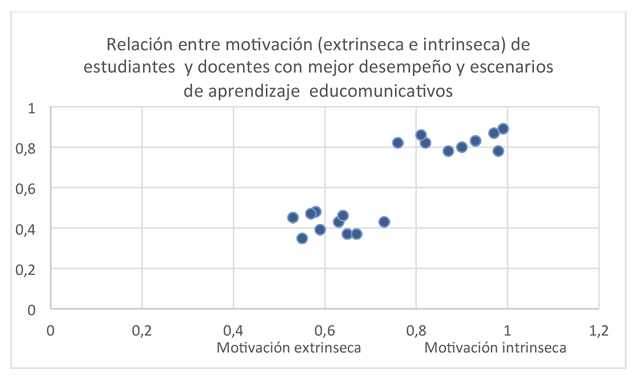
Graph 21: Relationship between motivation (extrinsic and intrinsic) of students and teachers with better performance and educommunicative learning scenarios. Made by the author
In order to build this relationship between motivation and performance, the motivational profile of students and teachers was first established, based on the scale of hierarchy of applied human needs (physiological, safety, affiliation, recognition and self-realization) (Maslow, 2005). A questionnaire was constructed to assess motivation and what type predominated (intrinsic-extrinsic), on a scale of 0 to 1.0; in which intrinsic (social reward, self-realization, recognition and affiliation) and extrinsic (achievement, evaluative weighting, the possibility of continuing in the education system) aspects were punctuated, which have to do with motivation. One hundred teachers and one hundred students who had obtained the best performances in educational activities participated.
Graph 21 shows a scatter plot that compares two sets of data pairs (students Vs teachers) and allows us to see the relation between sets of values; the points close to value 0.6 correspond to relations of extrinsic motivation variables and the points higher than 0.8 correspond to the relations of intrinsic motivation variables.
Obviously, the students and teachers with the best performance in educational activities are motivated by intrinsic variables such as affiliation and self-realization (close to 1), social reward and recognition. That is, enabling dialogue and criticism results in the activation of high-level motivational systems such as human realization.
Piaget’s invitation to put more brains into pedagogical management and curriculum design, in his book Vital Adaptation and Intelligence Psychology is still in force, as is Freinet’s to empower students in their process (Piaget, J. 1976).
ove is supported by the findings in cognitive neuroscience, ie the neurobiological, psychological and environmental processes that underlie the processes of attention, conscience, language, learning, memory, decision making, coconstruction, self-transcendence, creativity and their manifestations in behavior, they have been increasingly articulated to the applied academic processes, including new areas of research such as neuropedagogy, which integrates psychology, pedagogy and neurosciences and projects them for the improvement of educational practice. Knowing how we reason, the cognitive style, the interests of each population can contribute to offering a meaningful education, in a context that really transforms attitudes and behaviors in a certain environment (Damasio, A. 2010).
5. CONCLUSIONS
Preconceptions about education in digital environments directly influenced motivation, communication processes and academic performance in the sample of students and teachers exposed to their first experience in virtual education.
The concept of education in digital environments can be modified after the experience. A more rapid change in time, in students’ concepts, was observed in relation to teachers, who changed their concepts at a slower rate with respect to young people, but in a profound way, this can be attributed to differences in cognitive, behavioral and generational styles.
The relationship between educational activities and increased intrinsic motivation was clear in both samples (students and teachers). What invites to continue working on strengthening this philosophy and educational practice, which seems to be one that best fits education in the digital age.
The analysis of student performance shows that: they had better learning in playing activities, radio, web 2.0 and social networks, but they should improve in collaborative work activities and in activities involving programming. On the other hand, the analysis of performance by teachers evidences that: they show preference for synchronous and / or face-to-face activities, collaborative work and radio, but that they must improve their performance in the use of web2.0 tools, activities that involve programming, games and participation in activities in social networks.
To be improved: As noted, this study evaluated two different populations not only for their role in the academy but for generational reasons, we proposed making comparative studies among slightly more similar populations and corroborate the results. However, this is the uneven university landscape, which requires an intervention in my concept from the basis of what each part motivates, and a continuous evaluation of previous ideas and concepts sometimes ingrained to the past that can stifle the necessary change .
Prospective: Improvements in the academic system, pedagogy and didactics, based not only on physical, political, space and technology resources, they must also start from a current conception of teachers and students facing cultural, developmental needs And in line with the objectives of Sustainable Development, this implies a need to intervene in teaching strengthening. Since the last century, Delors, in his writing “Teaching staff in search of new perspectives”, already poses the reality that is increasingly changing in pedagogical practice (Delors, J.1996).
Lastly, in the words of Dr. Sonia Ma. Santoveña Casal, in an excerpt taken from the article on analysis of virtual courses, 2007: “Knowing what aspects of our virtual courses need to be modified and updated can help us develop and publish new telematic resources. Avoiding defensive stances and acting on the basis of continuous improvement “(Santoveña, 2007). Nothing is static, least of all the knowledge of our magnificent cognitive system and, therefore, of pedagogy. Paradoxically, we are the most difficult population to educate, or intervene, Why so reluctant to change? If we work with what changes the most: our brain.
6. REFERENCES
1. Aparici R (2010). Conectados en el ciberespacio. Madrid: UNED.
2. Aparici R (2010): Educomunicación: Más allá del 2.0. Madrid: Gedisa.
3. Barbas Ángel C (2012). Educomunicación: Desarrollo, enfoques y desafíos en un mundo interconectado. Foro de Educación, 14, 157-175.
4. Baron-Cohen S (2003). The essential difference. Londres: Penguin Books [Trad. esp. LaGran diferencia: cómo son realmente los cerebros de hombres y mujeres. Barcelona Amat Editorial (2005)].
5. Blaikie NWH (1996). A critique of the use of triangulation in social research. Quality and Quantity, 25, 115-136.
6. Camarero-Cano L (2015). Comunidades tecnosociales. Evolución de la comunicación analógica hacia la interacción analógico-digital. Revista Mediterránea de Comunicación, 6(1):187-195.
7. Castells M (2001 y 2004). The Informatión Age: Economy, Society and Culture (2.a ed.). Vol. 1: The rise of the Network Society, Oxford: Blackwell (2000). Vol. 2: The power of Identity, Oxford: Blackwell (2004). Vol 3: End of Millennium. Oxford: Blackwell (2000).
8. Castells M, Himanen P (2016). Reconceptualización del desarrollo en la era global de la información. Santiago de Chile: Fondo de Cultura Económica.
9. Castells, M (2000). La era de la información. Madrid: Alianza.
10. Chomsky N (1988). Language and problems of knowledge. Cambridge: The MIT Press [Trad. Esp. El lenguaje y los problemas del conocimiento. Madrid: Visor (1992)].
11. Damasio A (2010). Y el cerebro creó al hombre. Barcelona: Ediciones Destino.
12. Delors J (1996). La educación encierra un tesoro. Madrid: Santillana.
13. Redolar Ripoll D (2014). Neurociencia Cognitiva. Madrid: Editorial Médica Panamericana.
14. Gardner H (1999). Intelligence reframed: multiple intelligences for the 21st Century. York: Basic Book [Trad. esp. La inteligencia reformulada. Barcelona: Paidos (2001)].
15. Glaser BG, Strauss AL. (1967). The discovery of grounded theory: strategies for qualitative research. New York: Aldine de Gruyter.
16. Gutiérrez Martín A (2010). Creación multimedia y alfabetización en la era digital. En Aparici R (coord.). Educación: más allá del 2.0. Barcelona: Gedisa. 171-186.
17. Kandel E (2006). In search of memory. New York: Norton [Trad. esp. En busca de laMemoria. Buenos Aires: Katz Editores (2007)].
18. Kaplún M (2010). Una pedagogía de la comunicación. En Aparici R (Coord.). Educomunicación: más allá del 2.0. Barcelona: Gedisa Comunicación Educativa. 41-64.
19. Lévy P (2004). Inteligencia Colectiva por una antropología del ciberespacio. Washington: Organización Panamericana de la Salud (Unidad de Promoción y Desarrollo de la Investigación y el Centro Latinoamericano y del Caribe de Información en Ciencias de la Salud).
20. Lopez Aloso C, Matesanz del Barrio M (eds.) (2009). Las plataformas de aprendizaje. Del mito a la realidad. Madrid: Biblioteca Nueva.
21. Lazo M, Gabelas Barroso JA (2016). Comunicación Digital - Un modelo basado en el factor R-elacional. España: Editorial OUC.
22. Maslow Abraham J (2005). El management una visión humanista para la empresa de hoy (orig.: Maslow on Management). Barcelona: Editorial Paidós Ibérica.
23. Osuna S, Busón C (2007). Convergencia de Medios. La Integración Tecnológica en la Era Digital. Barcelona: Icaria.
24. Piaget J (1976). Adaptation vitale et psychologie de l´intelligence. París: Hermann.
25. Santoveña Casal SM (2007). Análisis de cursos de Educación Social en entornos virtuales de aprendizaje y su influencia en la calidad. Enseñanza, 25, 77-90.
26. Strauss A, Corbin J (1994). Grounded theory methodology, an overview. En Lincoln YS, Denzin NK. Handbook of qualitative research. Londres: Sage Publications. 273-285.
Webgrafía:
28. Ministerio de Tecnologías de la Información y las Comunicaciones (3/8/2016): 8 de cada 10 colombianos están usando Internet. http://www.mintic.gov.co/portal/604/w3-article-1629.html
29. Ministerio de Educación Nacional de Colombia (10/6/2010): Sistema de aseguramiento de la calidad de la educación superior. http://www.mineducacion.gov.co/1759/w3-article-235585.html
30. Ministerio de Educación Nacional de Colombia (8/4/2014). Lineamientos de política de educación superior inclusiva. http://www.mineducacion.gov.co/1759/w3-article-340146.html
31. Sistema Nacional de Información de la Educación superior SNIES (s.f.). http://snies.mineducacion.gov.co/consultasnies/programa# (Recuperado 1/12/2016)
32. Siemens G (2010). Conociendo el conocimiento (Grupo Nodos Ele, trad.) http://craig.com.ar/biblioteca/Conociendo%20el%20Conocimiento%20-%20George%20Siemens.pdf (Obra original publicada en 2006)
33. UNESCO (s.f.). La UNESCO y los Objetivos de Desarrollo Sostenible. http://es.unesco.org/sdgs (Recuperado 12/12/2016)
34. Universidad Manuela Beltrán Virtual (2016). Quienes somos: Modelo Pedagógico UMB Virtual. http://umbvirtual.edu.co/quienes-somos/
AUTHOR
Yeldy Milena Rodríguez García
Teacher, Researcher, Academic Manager.
Biologist and Master of Neurobiology from the Pontificia Universidad Javeriana de Bogotá Master of Social Networks and Digital Learning and is doing her Doctorate in Communication and Education in Digital Environments from the National University of Distance Education of Spain UNED